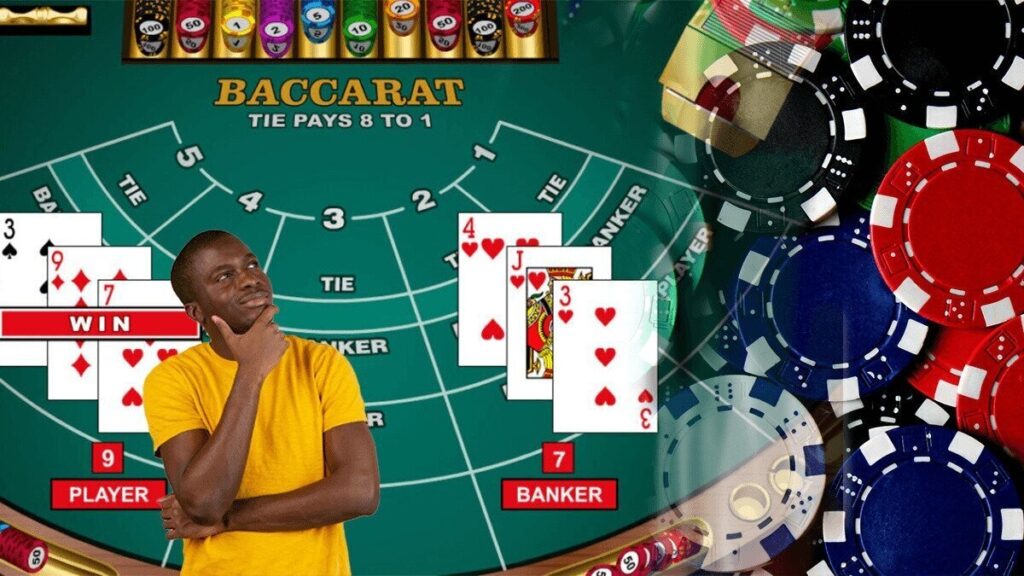Introduction to Baccarat Third Card Rules
Baccarat is renowned for its straightforward gameplay, but the rules concerning the draw of the third card can initially seem perplexing. However, delving into these rules unveils a logical system that enhances players’ enjoyment and provides essential knowledge for aspiring baccarat dealers.
The Significance of Third Card Rules
While players may not directly control the game’s progression, comprehending the third card rules heightens their engagement and strategic understanding. Moreover, for individuals aspiring to become live dealers in land-based casinos or specialize in live dealer baccarat, mastery of these rules serves as a crucial foundation.
Unraveling the Complexity: Baccarat Third Card Rules in Detail
To elucidate the intricacies of baccarat third card rules, we’ll dissect the three sequential rules governing its draw. These rules dictate the actions of both the Player and the Banker, ensuring a structured gameplay experience.
Rule #1: Player’s Third Card Draw
The sequence commences with the Player, who receives their cards first. If the Player’s initial hand totals fada888 between 0 and 5, they draw a third card. Conversely, if their total is 6 or higher, they stand, abstaining from drawing another card.

Rule #2: Banker’s Response to Player’s Total
Upon the Player’s decision, the focus shifts to the Banker. If the Player hasn’t drawn a third card, indicating a total of six or more, the same rule that applied to the Player now governs the Banker’s actions. This ensures consistency and fairness in gameplay.
Rule #3: Banker’s Decision Based on Player’s Total and Third Card
In scenarios where the Player draws a third card, the Banker’s subsequent actions are contingent on both the Player’s total and the specific value of the drawn third card. This rule adds an additional layer of complexity, requiring astute observation and strategic fada888 decision-making from both players and dealers.
Mastering Baccarat Third Card Rules: A Journey to Expertise
While grasping the initial two rules lays a solid foundation, achieving mastery necessitates a comprehensive understanding of the third rule. By immersing oneself in live dealer baccarat games and honing observational skills, aspiring dealers can elevate their expertise and seamlessly navigate the intricacies of gameplay.
Essential Baccarat Rules: Building Blocks of Gameplay
Before delving into the nuances of third card rules, it’s imperative to revisit the fundamental principles of baccarat. Understanding card values, scoring mechanics, and gameplay dynamics lays the groundwork for comprehending the third card rules and optimizing fada888 strategic decisions.
Clarifying Card Values and Scoring
In baccarat, card values are straightforward, with face cards carrying zero value and Aces representing one point. Additionally, the sum of card values is calculated, with only the rightmost digit considered for scoring. This simplistic scoring system ensures accessibility and ease of play for all participants.
Navigating Third Card Scenarios
In instances where neither the Player nor the Banker achieves a natural (an 8 or 9) with their initial two cards, the possibility of drawing a third card arises. Understanding the conditions under which a third card is drawn and its implications for gameplay fada888 enhances players’ strategic decision-making capabilities.
Conclusion: Empowering Players and Dealers Alike
In conclusion, unraveling the complexities of baccarat third card rules empowers players and dealers to engage more deeply with the game. By mastering these rules, individuals can enhance their enjoyment, optimize their gameplay strategies, and pursue career opportunities within the realm of live dealer baccarat. Whether as players or dealers, a thorough understanding of baccarat’s third card fada888 rules enriches the overall gaming experience.

